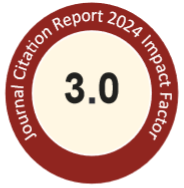Abstract
Bayberry (Myrica rubra Sieb. et Zucc.) anthocyanins were extracted with 0.15% HCl in methanol, removed from other polyphenols by partition with petroleum ether and ethyl acetate, and then purified in a C-18 solid phase cartridge. Pigments were analyzed by high-performance liquid chromatography (HPLC), photodiode array detection (DAD), electronic spray ion mass spectrometry (ESIMS) and gas chromatography (GC) without the standard. The major anthocyanin, which contained 97% of the total peak area, was identified as cyanidin 3-glucoside. This pigment may be taken as a marker for authenticity control of bayberry products and has potential as a reference compound of cyanidin 3-glucoside in anthocyanin analysis. When standard chemicals are not available, HPLC-DAD-ESIMS and GC are useful in anthocyanin identification if the anthocyanin profile is not overly complex in the studied materials.
Recommended Citation
Fang, Z.-X.; Zhang, M.; Wang, L.-X.; and Sun, J.-C.
(2006)
"Identification of anthocyanin in Bayberry (Myrica rubra Sieb. et Zucc.) by HAPLC-DAD-ESIMS and GC,"
Journal of Food and Drug Analysis: Vol. 14
:
Iss.
4
, Article 8.
Available at: https://doi.org/10.38212/2224-6614.2457

